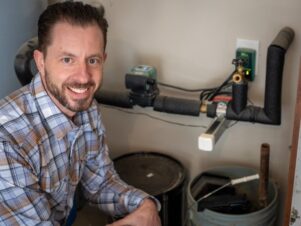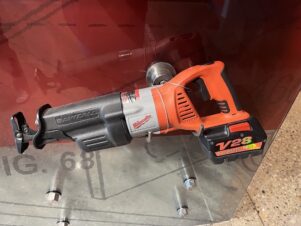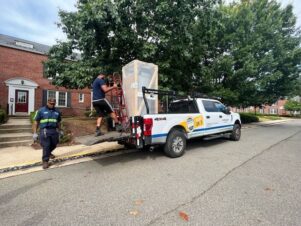For an industry that is the path bearer for all other industries and forthrightly the engine for a nation, the power generation industry is vital. There are different types of power plants built for generating power from energy sources like coal, nuclear, solar, wind, tidal, or natural gas, a power generation plant can not compromise on the aspect of machinery and automation, since their performance is directly proportional to efficiency and productivity, which again are the focal points in this industry. In that pursuit, the CNC machine becomes a vital piece of machinery for the power generation industry.
Decoding CNC
A Computer Numerical Control Machine (CNC) is a pre-programmed computer software controlling the movement of factory tools and machinery. It controls a range of complex machinery and is proactively used in several industries, from manufacturing to E&P to power generation. It supersedes the limitations posed by manual intervention, where live operators prompt. It guides the commands of machining tools with levers, buttons, and wheels, curtailing inefficiency and the possibility of mishandling or flaws. A CNC system might very well resemble any regular set of computer components to an onlooker. Still, the software programs and consoles of CNC machining make it different from all other forms of computation and are proactively instrumental in the pursuit of power generation.
Role of CNC in power generation
CNC plays varied roles in various power generation industries. For example, it is instrumental in fabricating hydropower turbines and generator components. As we know, hydropower turbines and generators are complicated pieces of equipment and they have thousands of components in different sizes ranging from a piece smaller than our index finger to as big as a car. However, one common underlying fact is that all of these pieces of equipment are machines accurately with great precision to guarantee seamless assembly. CNC machine is then able to satisfy these requirements. For instance, Canyon Hydro, which is one of the leading manufacturers of Francis hydroelectric turbines uses a 7-axis CNC machine to fabricate the majority of the parts constituting their 36 Ft long and 25-ton hydroelectric system. Similarly in the conventional power industry, CNC machining is able to fabricate difficult-to-machine materials too. Unlike the renewable energy industry, traditional generator components are subjected to radically high temperatures of up to 2300℉ since these turbines and generators depend on burning fossil fuels to generate power. The problem that arises is not about finding a metal with high thermal resistance but finding a suitable method for manufacturing those metals since even metals like titanium and its alloys have high strength tend to chatter during metal cutting because of poor machinability. This problem is solved by CNC machining since it is compatible with a broad range of materials. For example, CNC machine titanium which has a cutting speed of 59 m/min for roughing and around 180 m/min for finishing operations is used for machining titanium and its alloys. It is also becoming a part of research in solar and wind power systems as scientists are devising ways to replace conventional energy systems with renewable ones by assessing the energy efficiency and performance of novel wind turbine blade designs and solar panels.
Machining dynamic and diverse forms of large and complex parts in a power generating facility often leads to several challenges, including repairs, maintenance issues, and finding the right human resource capable of running such a diverse assortment of machines. A CNC machine solves this problem and is easy to operate by operators for handling all motion controls. To a substantial extent, CNC also helps in the predictive treatment of pieces of equipment. In the most elemental form, CNC machines are electro-mechanical devices, i.e a computer numerically controlled to manipulate tools. These machines are instructed by a computer program (G-code) which is able to assess the precision of the output and therefore determine when it is not performing up to the mark.
CNC repair service in the parlance of power generation
It is well understood that the power industry is the engine of any economy since it runs all other industrial units, and CNC is undoubtedly a vital element of a power generation facility. Therefore, when the CNC system is down, the power plant is crippled, losing thousands of dollars and time. It is noteworthy that a CNC breakdown includes obstacles in all CNC machining processes like CNC milling, turning, five-axis machining, and several other jobs done by CNC automation. Thus, one must know the following dynamics of CNC repair service inducted in the power generation industry.
- A CNC machine consists of mechanical, electrical, and electronics components and generally encounters fault due to low-quality components, neglecting cutting parameters (for example, the cutting limit of a particular CNC machine is 500 rpm. and it is being operated more than that limit), and overloading.
- Common problems in the mechanical component of a CNC machine are, misalignment of bed, failure of the spindle, problem in gear shift mechanism, and problem in automatic tool changer which are results of overloading and overheating.
- Failure of moving parts such as screws, slideways, bearing, etc, can be repaired by reducing friction with proper lubrication and using a low friction coating.
- Failure in the relay, solenoids of the motor, failure in servo drive of the motor, problem in spindle drive electrical supply, short-circuiting, low voltage problems, etc. are some of the common problems of electrical components of CNC.
- Some of the most common problems in pneumatic components are the deformation of the inside wall of cylinders which is used in actuators, deformation in piston or piston rings which will lead to leakage and the equator will not be able to function.
- Electronic Components of a CNC machine comprise PCBs (Printed Circuit Boards), electronic casings and enclosures, heat sinks, connectors and sockets, semiconductors, etc. Therefore it can encounter failure in hardware components of computer systems, faults in the program (syntax error), operating faults, faults during program testing, and problem search operations.
- Routine CNC maintenance is essential, including scheduled inspection, predictive analysis, and a well-divested physical check-up of the equipment, control panel, and other parts. Complete maintenance service includes checking for any abnormal noise, replacement of hydraulic oil, checking spindle belt tension, cleaning the inlet filter, checking turret alignment, and dismantling and cleaning the chuck.
- It would be best to remember that there are various types of CNC machines such as drills, lathes, and milling machines. Therefore it is vital to always adhere to the maintenance guidelines specific to their CNC machine.
- The machine’s average run time and materials used are factors influencing how often it needs servicing. However, it is advised to have CNC machine checks at least once a month.
- A CNC Machine electrical maintenance must be carried out including spindle drive replacement, hydraulic pressure switch setting repairment, electrical circuit maintenance, etc.
- For CNC repairing, spare parts must always be handy as repairing the damage takes time. Hence, to eliminate the loss incurred during the downtime, one can purchase replacement parts in advance so that time which is of the essence in this industry, is not wasted waiting for the newly ordered ones to arrive in case of urgency.
- One thing that goes unaddressed by many sectors in the paradigm of CNC is keeping accurate records of the maintenance and repair services. It helps one in tracking the machine usage history over time and calculating how frequently various components need servicing.
Following a diligent practice of routine maintenance for CNC machines reduces downtime, improves tool life, maintains your significant financial investment, and improves productivity.




Join the conversation: